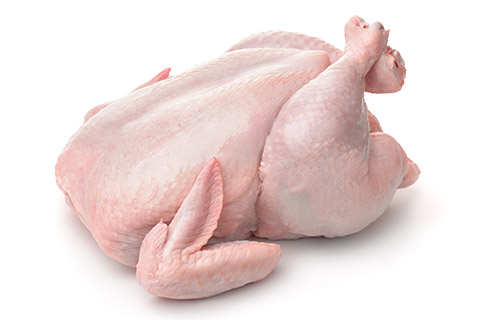On this page
- What is Campylobacter enteritis?
- What are symptoms of a Campylobacter enteritis infection?
- How does Campylobacter enteritis spread?
- How is Campylobacter enteritis prevented?
- How long is it contagious?
- How is Campylobacter enteritis diagnosed and treated?
What is Campylobacter enteritis?
Campylobacter enteritis is an infection caused by a group of bacteria. These germs live mostly in the intestines of animals, including poultry, cattle, rodents, and household pets.
It is the most frequently reported enteric disease in Windsor-Essex County, with 63 confirmed cases in 2020 and 76 confirmed cases in 2021. Cases are more common during the warmer months.
What are symptoms of Campylobacter enteritis?

- Diarrhea (loose poop) that can be bloody
- Stomach pain and/or cramping
- Fever
- Nausea
- Vomiting
It usually takes 2 to 5 days after contact with the germ for you to feel sick. Symptoms may last for 1 to 10 days, and can vary from mild to severe.
Sometimes Campylobacter infections cause complications, such as irritable bowel syndrome, temporary paralysis, and arthritis. Campylobacter can occasionally spread into the bloodstream of those with weakened immune systems, those receiving chemotherapy or other blood disorders. This can cause a life threatening infection.
How does Campylobacter enteritis spread?
Campylobacter infections spread from animals; most frequently poultry and cattle. Household pets (especially puppies and kittens), pigs, sheep, rodents and birds are also sources of infection. In many countries, raw poultry meat is commonly contaminated. It does not usually spread from one person to another person. To reduce your chance of infection, avoid the following:
- Drinking untreated water or unpasteurized milk
- Eating raw or undercooked poultry or meat.
- Contact with infected pets (especially puppies and kittens), pet feces, and farm animals. Always wash hands after contact with any animals.




How is Campylobacter enteritis prevented?
Ways to prevent infection include:
- Wash your hands often with warm water and soap, especially before and after preparing foods, before eating, and after handling diapers and using the washroom. This is the best way to prevent infection.
- Wash your hands after touching pets, other animals and handling pet food or pet feces.
- Practice safe food handling, including cooking raw meats properly, washing all uncooked fruits and vegetables in clean water, and storing food properly.
- Do not use the same cutting board for cooked meats that was used for raw meat and use a different cutting board for fresh fruits and vegetables. Avoid preparing food if you are sick.
- When traveling on vacation, be aware of food preparation and handling in high risk countries.
- Avoid drinking untreated water. Drink only pasteurized (treated) milk and milk products. Be careful not to swallow water when swimming in lakes or ponds.
How long is it contagious?
A person can pass the infection to others as long as the germ is present in their feces (poop). This can be for several days to several weeks.
Exclusions from Work
Symptomatic food handlers and healthcare providers, and day care staff and attendees should not attend work until they are symptom free for 24 hours, or 48 hours after completion of antibiotic or anti-diarrheal medications. Please note that treatment recommendations are under the direction of the individual’s health care provider.
How is Campylobacter enteritis diagnosed and treated?
Campylobacter infection is diagnosed when a laboratory test detects the bacteria in your stool, body tissue, or fluids. If you or someone in your care develops symptoms of Campylobacter enteritis, see your health care provider.
Most people recover from Campylobacter infection without antibiotic treatment. Patients should drink extra fluids as long as diarrhea lasts.
Some people with, or at risk for, severe illness might need antibiotic treatment. These people include those who are 65 years or older, pregnant women, and people with weakened immune systems, such as those with a blood disorder, with AIDS, or receiving chemotherapy.
Depending on your type of job, you may be advised to stay home to minimize the spread of infection, especially those who work with food, water, and children or are health care providers.
References:
- Heymann, D.L. (Ed.). (2015). Control of communicable diseases manual (20th ed.). Washington, DC: American Public Health Association.
- Ontario Ministry of Health (May 2022). Infectious diseases protocol, Appendix 1: Case Definitions and Disease-Specific Information: Campylobacter enteritis. Toronto, ON: Queen’s Printer for Ontario.
- Public Health Agency of Canada. Campylobacter. Retrieved July 13, 2022.
- Centre for Disease Control and Prevention. Campylobacter. Retrieved July 13, 2022.
- World Health Organization. (2016). Campylobacter. Retrieved July 13, 2022.

